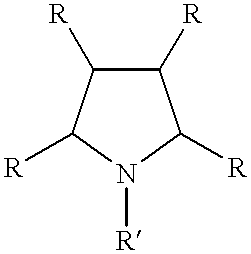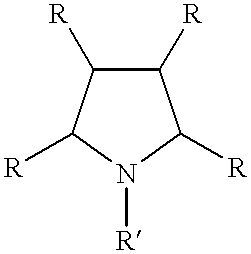Electrolyte and tin-silver electroplating process
a technology of electroplating process and tin-silver, which is applied in the direction of liquid/solution decomposition chemical coating, coating, printed circuit manufacturing, etc., can solve the problems of dimensional instability of the circuit board laminate, alloy melting prematurely, and inability to meet the requirements of future use, so as to improve the appearance of the deposit and improve the operating current density range
- Summary
- Abstract
- Description
- Claims
- Application Information
AI Technical Summary
Benefits of technology
Problems solved by technology
Method used
Image
Examples
example 1
The following electrolyte was prepared:
Deposits plated from the above formulation were satin to matte in appearance and had a smooth grain structure with no dendritic growth. The relation between current density and deposit composition is shown below.
example 2
The following electrolyte was prepared:
Deposits plated from the above formulation were satin to matte in appearance and had a smooth grain structure with no dendritic growth. The relation between current density and deposit composition is shown below.
example 3
The following electrolyte was prepared:
Deposits plated from the above formulation were satin to matte in appearance and had a smooth grain structures with no dendritic growth. The relation between current density and deposition composition is shown below.
PUM
| Property | Measurement | Unit |
|---|---|---|
| concentration | aaaaa | aaaaa |
| concentration | aaaaa | aaaaa |
| temperature | aaaaa | aaaaa |
Abstract
Description
Claims
Application Information
 Login to View More
Login to View More - R&D
- Intellectual Property
- Life Sciences
- Materials
- Tech Scout
- Unparalleled Data Quality
- Higher Quality Content
- 60% Fewer Hallucinations
Browse by: Latest US Patents, China's latest patents, Technical Efficacy Thesaurus, Application Domain, Technology Topic, Popular Technical Reports.
© 2025 PatSnap. All rights reserved.Legal|Privacy policy|Modern Slavery Act Transparency Statement|Sitemap|About US| Contact US: help@patsnap.com


